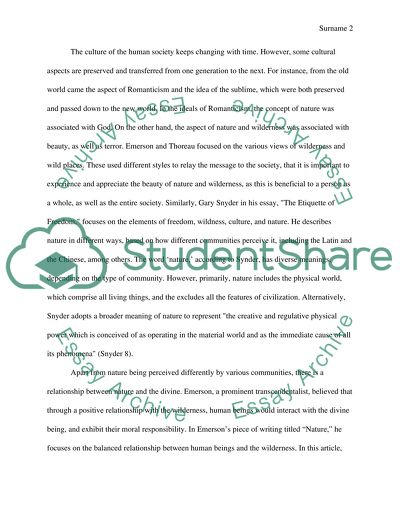Cite this document
(“Nature, Wilderness and Place Essay Example | Topics and Well Written Essays - 1750 words”, n.d.)
Retrieved from https://studentshare.org/english/1479076-final-essay-nature-place-and-wildness
Retrieved from https://studentshare.org/english/1479076-final-essay-nature-place-and-wildness
(Nature, Wilderness and Place Essay Example | Topics and Well Written Essays - 1750 Words)
https://studentshare.org/english/1479076-final-essay-nature-place-and-wildness.
https://studentshare.org/english/1479076-final-essay-nature-place-and-wildness.
“Nature, Wilderness and Place Essay Example | Topics and Well Written Essays - 1750 Words”, n.d. https://studentshare.org/english/1479076-final-essay-nature-place-and-wildness.


